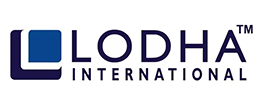Get in touch! +91 9687731331 | +91 9687631331 | info@lodhapharma.com
Role of Tablet Coating in Controlled Drug Release
Controlled drug release refers to the precise delivery of pharmaceutical substances over an extended period to achieve the desired therapeutic effect. It involves formulating drug dosage forms in a way that releases the drug in a controlled manner, following a predetermined release profile. Tablet coating is a crucial technique used to achieve controlled drug release.
Tablet coating is a multistep process that can improve the physical and chemical properties of dosage forms. It can also control the pattern of drug release, mask taste, and reduce gastrointestinal side effects.
Controlled drug release is vital for drugs that require specific release patterns, such as sustained release, extended-release, or delayed release. By controlling the release of drugs, healthcare professionals can optimize the drug's pharmacokinetics, enhance patient compliance, and reduce side effects.
Importance of Tablet Coating
Tablet coating plays a pivotal role in controlled drug release. The coating acts as a barrier between the drug and its environment, protecting it from degradation and facilitating the desired release pattern. The coating also provides mechanical strength, improves appearance, and masks the unpleasant taste or odour of the drug.

Different Types of Coating Techniques
Several coating techniques are employed in pharmaceutical manufacturing to achieve controlled drug release. The choice of coating technique depends on the specific requirements of the drug and the desired release profile. Here are three commonly used coating techniques:
- Sugar Coating
Sugar coating is one of the oldest coating techniques. It involves layering the tablet with a series of coatings, including sugar syrup, colouring agents, and polishing agents. This technique provides a smooth, glossy, and aesthetically pleasing finish to the tablet.
- Film Coating
Film coating involves the application of a thin polymer film on the tablet's surface. This technique offers more precise control over drug release as the polymer film can be formulated to release the drug at a specific rate. Film-coated tablets are commonly used for sustained-release formulations.
- Enteric Coating
Enteric coating is used when the drug needs protection from the acidic environment of the stomach. The coating is resistant to gastric fluids but dissolves in the alkaline environment of the intestine. Enteric-coated tablets ensure that the drug is released in the targeted region of the gastrointestinal tract.
Factors Affecting Controlled Drug Release
Several factors influence the controlled release of drugs from coated tablets. Understanding these factors is crucial for optimizing drug release profiles. The following factors play a significant role:
- Coating Composition
The choice of coating material significantly affects the drug release profile. Different polymers have different release characteristics, such as hydrophilic or hydrophobic nature, pH sensitivity, or permeability.
- Coating Thickness
The thickness of the coating layer directly impacts the drug release rate. Thicker coatings tend to release the drug more slowly, while thinner coatings can result in faster release.
- pH Sensitivity
Enteric coatings, which are pH-sensitive, dissolve at specific pH values. This property allows for targeted drug release in the desired region of the gastrointestinal tract.
- Dissolution Rate
The dissolution rate of the coating affects the drug release profile. Coatings that dissolve rapidly release the drug quickly, while coatings with slower dissolution rates lead to sustained release.

Advantages of Tablet Coating in Controlled Drug Release
Tablet coating provides several advantages in achieving controlled drug release. Let's explore some of them:
- Enhanced Stability
Coating tablets protect the drug from environmental factors such as moisture, light, and oxygen, thus enhancing the drug's stability and shelf life.
- Improved Bioavailability
The coating can control the release rate of the drug, allowing for improved absorption and bioavailability. It ensures that the drug is released at the right location for optimal absorption.
- Targeted Drug Delivery
Coating techniques like enteric coating enable targeted drug delivery to specific regions of the gastrointestinal tract, ensuring effective treatment for conditions such as inflammatory bowel disease or peptic ulcers.
- Reduced Side Effects
By controlling the release rate of the drug, the coating can minimize the occurrence of side effects associated with high drug concentrations. It helps maintain a consistent drug level within the therapeutic range.

